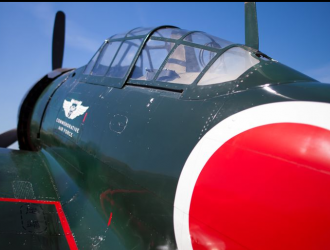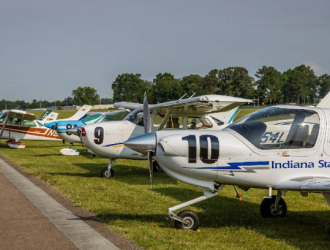
Bell holds more than 400 letters of intent (LOIs) for the 505 and is in the process of converting them into firm orders. The LOIs signed in 2013 were for a base price of $1.07 million, according to Lashan Bonaparte, Bell Helicopter, 505 program manager. More than 100 Bell Mirabel employees are working on the 505, part of Bell's 900-strong Canadian workforce. By the end of 2018, Bonaparte said, Bell expects to build 150 505s per year, while the total for 2017 may reach half that number. “We have a lot of capacity in Mirabel,” she said.
Meanwhile Bell engineers and technicians are working on various kits for the 505, including a cargo hook, mirrors, weighing system, floor protectors and automatic door openers. The 505 customer advisory council is also working with Bell on other kit concepts.
The 505’s flat-floor makes reconfiguring the interior easy, with seats easily removable. Many of the buyers are corporate operators, with the remainder planning to use their 505s for utility operations. United Rotorcraft is developing an aeromedical interior for the 505 and has a mockup on display in its Heli-Expo booth (5310).
Training for 505 pilots will initially be done at the Bell Training Academy in Forth Worth, Texas, with maintenance training offered in Fort Worth, Singapore and Valencia, Spain. Pilot initial training will take one week and initially will be in the helicopter. Later this year, Bell expects its 505 Level 7 flight training device, built by sister company Tru Training + Simulation, to be qualified. This simulator will be a fixed-base device but will be equipped with a secondary cockpit movement system to add realism to the training.
Maintenance training employs a 3-D modeling computer system to help technicians learn their way around the helicopter. This is the first time that Bell has put 3-D modeling into use for maintenance training and should save wear and tear and time, compared to using the actual helicopter as a training tool.
During the design phase, Bell staffed a cross-functional team to design the 505’s maintenance program, incorporating modern MSG-3 principles to minimize unnecessary maintenance. Some inspection intervals, for example, are double what they would have been on earlier designs. Access panels are located so they are easy to reach and open using quarter-turn fasteners. Avionics boxes are all located on an easily accessed shelf in the aft fuselage. A True Blue Power TB17 lithium-ion battery provides stronger and faster engine starts and is fitted with a heater to warm the battery in cold weather, eliminating the need to remove the battery during cold overnights.
The 505 is equipped with a Garmin G1000H integrated flight deck that includes two large displays (PFD and MFD), engine instruments with a power situation indicator and automated power assurance check, ADS-B OUT, flight monitoring and video input. Options include H-TAWS, traffic, synthetic vision and a second com radio.
Performance turned out better than originally expected, according to Bonaparte. Maximum takeoff weight is now 3,680 pounds, up 30 pounds from the earlier number, and max cruise is 126 knots. The 505 can carry more than 1,500 pounds of useful load and offers maximum range of more than 360 nm or endurance over 3.5 hours. Hover-in-ground-effect ceiling at maximum weight is 14,000 feet, and out-of-ground-effect 12,000 feet. Power is provided by a Safran Helicopter Engines Arrius 2R rated at 504 shp for takeoff and 457 shp max continuous.



